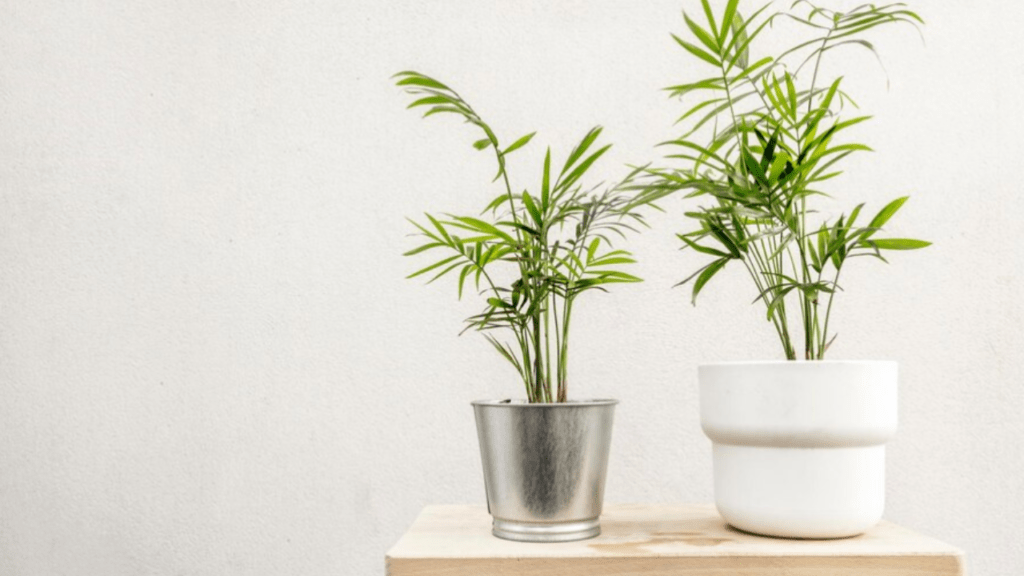
The Ultimate Guide to Growing Healthy Bamboo Indoors: Tips and Tricks
Growing bamboo indoor can be a rewarding and beautiful addition to your home decor. However, it does require some specific care and maintenance to ensure that it thrives in an indoor environment. In this ultimate guide, we’ll cover everything you need to know about growing healthy bamboo indoors, from choosing the right variety to proper care and maintenance. Whether you’re a beginner or have some experience with indoor gardening, this guide will provide you with the tips and tricks you need to successfully grow healthy bamboo in your home.
Growing bamboo indoors has become increasingly popular as people look for ways to bring a touch of nature into their homes. However, it’s important to understand that growing bamboo indoor requires some specific care and attention. First and foremost, it’s important to choose the right variety of bamboo for indoor growing. Some varieties, such as lucky bamboo, are well-suited for indoor environments and require minimal maintenance. Other varieties may require more attention and specific growing conditions.
Once you’ve chosen the right variety, it’s important to provide the proper care and maintenance to ensure the health and vitality of your indoor bamboo. This includes providing the right amount of water, sunlight, and humidity. It’s also important to periodically check for pests and diseases, as indoor environments can sometimes create the perfect conditions for these issues to arise.
In addition to care and maintenance, it’s important to consider the aesthetic aspect of growing bamboo indoors. Bamboo can be a beautiful and striking addition to your home decor, but it’s important to consider placement and presentation to ensure that it complements your space.
In conclusion, growing healthy bamboo indoors can be a rewarding and enjoyable experience. With the proper care, attention, and knowledge, you can successfully grow beautiful bamboo in your home. This ultimate guide will provide you with the tips and tricks you need to create a thriving indoor bamboo garden.
Table of Contents
ToggleUnderstanding Indoor Bamboo
Once you’ve chosen the right variety, it’s important to provide the proper care and maintenance to ensure the health and vitality of your indoor bamboo. This includes providing the right amount of water, sunlight, and humidity. It’s also important to periodically check for pests and diseases, as indoor environments can sometimes create the perfect conditions for these issues to arise. In addition to care and maintenance, it’s important to consider the aesthetic aspect of growing bamboo indoors. Bamboo can be a beautiful and striking addition to your home decor, but it’s important to consider placement and presentation to ensure that it complements your space. In conclusion, growing healthy bamboo indoors can be a rewarding and enjoyable experience. With the proper care, attention, and knowledge, you can successfully grow beautiful bamboo in your home. This ultimate guide will provide you with the tips and tricks you need to create a thriving indoor bamboo garden.
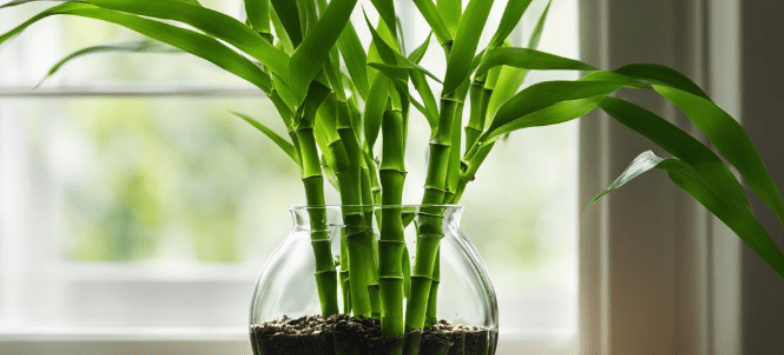
Types of Bamboo Suitable for Indoors
There are several types of bamboo that are well suited for growing indoors. The most popular choice for indoor bamboo is the lucky bamboo, also known as Dracaena sanderiana. This type of bamboo is often grown in water and is known for its low maintenance requirements. Another type of bamboo suitable for indoor growth is the heavenly bamboo, also known as Nandina domestica. This bamboo variety has colorful foliage and can thrive in indoor environments with proper care. Other indoor bamboo options include dwarf bamboo and umbrella bamboo, both of which can add a unique and tropical touch to your indoor space. When selecting a type of bamboo for indoor growth, it’s important to consider factors such as space availability, lighting conditions, and the overall aesthetic you’re looking to achieve. With the right care and attention, you can successfully grow beautiful bamboo indoors.
Benefits of Growing Bamboo Indoors
Growing bamboo indoors has many benefits. Indoor bamboo not only adds a touch of greenery and tropical flair to your home, but it also helps purify the air by removing toxins. Bamboo is known for its air-purifying properties, making it a great addition to any indoor space. Additionally, growing bamboo indoors can create a calming and relaxing atmosphere, promoting a sense of tranquility and well-being. Bamboo is also a low-maintenance plant, making it an ideal choice for those who are new to gardening or have a busy schedule. With the right care, indoor bamboo can thrive and add beauty to your home. Lastly, growing bamboo indoors allows you to enjoy the beauty and benefits of this versatile plant year-round, regardless of the outdoor climate. Whether you choose lucky bamboo, heavenly bamboo, or another variety, indoor bamboo can bring joy and natural beauty to your indoor environment.
Choosing the Right Bamboo for Indoors
Factors to Consider
When choosing bamboo for indoor use, there are several factors to consider. First, consider the size of the space where you plan to place the bamboo. Some varieties of bamboo can grow quite tall, so be sure to choose a variety that fits the space you have available. Additionally, consider the amount of light the space receives. While bamboo can thrive in low light conditions, some varieties may prefer more light. Finally, consider the level of maintenance you are willing to commit to. Some varieties of bamboo may require more attention and care than others. By considering these factors, you can choose the right bamboo variety for your indoor space and enjoy the beauty and benefits it brings.
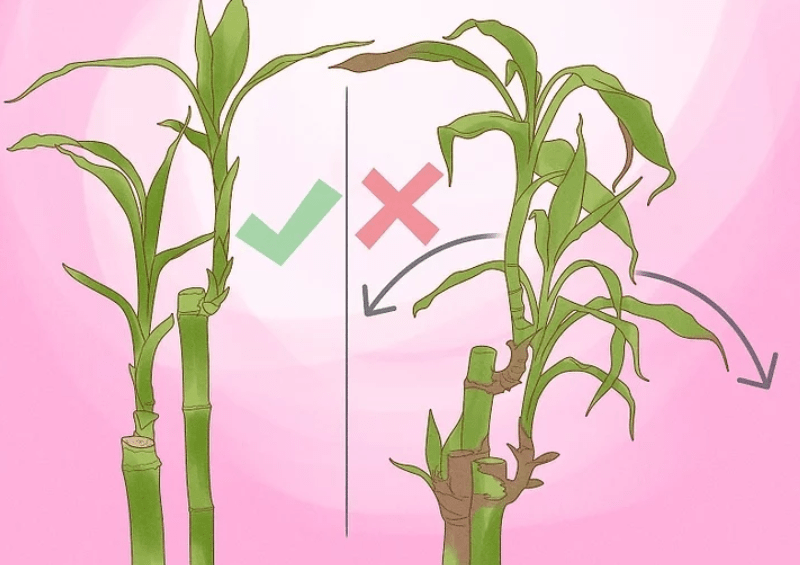
Popular Indoor Bamboo Varieties
There are several popular indoor bamboo varieties to choose from, each with its own unique characteristics. The most common indoor bamboo varieties include the Lucky Bamboo, Heavenly Bamboo, and Black Bamboo. Lucky Bamboo is a popular choice for its easy maintenance and ability to thrive in low light conditions. Heavenly Bamboo, also known as Nandina, is prized for its vibrant red foliage and ability to add a pop of color to indoor spaces. Black Bamboo, on the other hand, is known for its striking black stems and elegant, feathery foliage. When choosing an indoor bamboo variety, it’s important to consider the size of the space, the amount of light, and the level of maintenance required. By considering these factors, you can select the perfect indoor bamboo variety to enhance your space.
Setting Up Your Indoor Bamboo
Selecting the Right Container
When setting up your indoor bamboo, it’s important to choose the right container. The container should be large enough to provide ample room for the bamboo’s roots to grow and expand. It’s also important to choose a container with good drainage to prevent waterlogged soil, which can lead to root rot. Additionally, consider the material of the container – ceramic or glass containers are popular choices for indoor bamboo as they provide a stylish and decorative look. Make sure to place a saucer or tray underneath the container to catch any excess water and protect your surfaces. By selecting the right container for your indoor bamboo, you can ensure that it thrives and adds a touch of natural beauty to your indoor space.
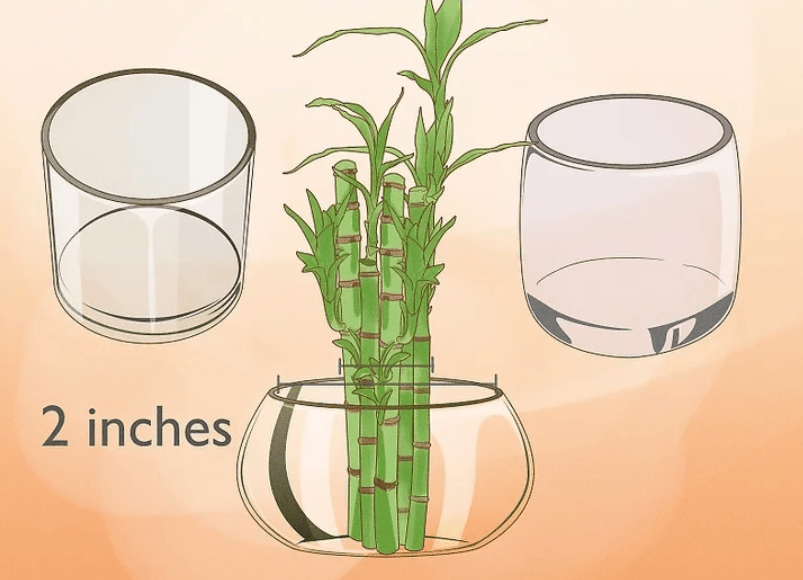
Ideal Soil Mix for Indoor Bamboo
When it comes to choosing the perfect soil mix for indoor bamboo, it’s important to consider a few key factors. Bamboo plants thrive in well-draining soil, so it’s important to choose a soil mix that provides good drainage. A mix of potting soil and perlite or sand can help create the ideal growing medium for indoor bamboo. Another important factor to consider is the pH level of the soil – bamboo plants prefer slightly acidic soil, so be sure to choose a soil mix with a pH level between 6.0 and 6.5. Additionally, adding a layer of small stones or pebbles at the bottom of the container can further improve drainage and prevent waterlogged soil. By selecting the right soil mix for your indoor bamboo, you can create the perfect growing environment for this beautiful and low-maintenance plant.
Positioning Your Bamboo for Optimal Growth
When growing bamboo indoors, it’s important to consider the right positioning to ensure optimal growth. Bamboo plants require a good amount of sunlight, so it’s best to place them in a location with bright, indirect light. Avoid placing your bamboo in direct sunlight as this can lead to leaf burn.
It’s also important to rotate your bamboo plant regularly to ensure even growth and prevent it from leaning towards the light source. Additionally, be mindful of the temperature – bamboo plants thrive in temperatures between 60-80 degrees Fahrenheit, so try to keep them in a warm and consistent environment.
Finally, consider the humidity levels in your home. Bamboo plants prefer a humid environment, so consider using a humidifier or misting the plant occasionally to maintain the right humidity levels.
By positioning your indoor bamboo in a location with the right amount of light, temperature, and humidity, you can ensure optimal growth and keep your plant healthy and thriving.
Daily Care and Maintenance
Watering Your Indoor Bamboo
Watering Your Indoor Bamboo is an important aspect of its care. It’s important to keep the soil consistently moist, but not waterlogged. Water your bamboo plant when the top inch of soil feels dry to the touch. Be sure to water the plant thoroughly, allowing excess water to drain away. It’s also important to use room temperature or tepid water when watering your bamboo, as cold water can shock the plant’s roots. In addition to regular watering, it’s a good idea to occasionally fertilize your bamboo plant with a balanced, liquid fertilizer to promote healthy growth. Be sure to follow the instructions on the fertilizer packaging for the best results. By providing your indoor bamboo with the right amount of water and nutrients, you can help it to thrive and grow into a beautiful and healthy plant.
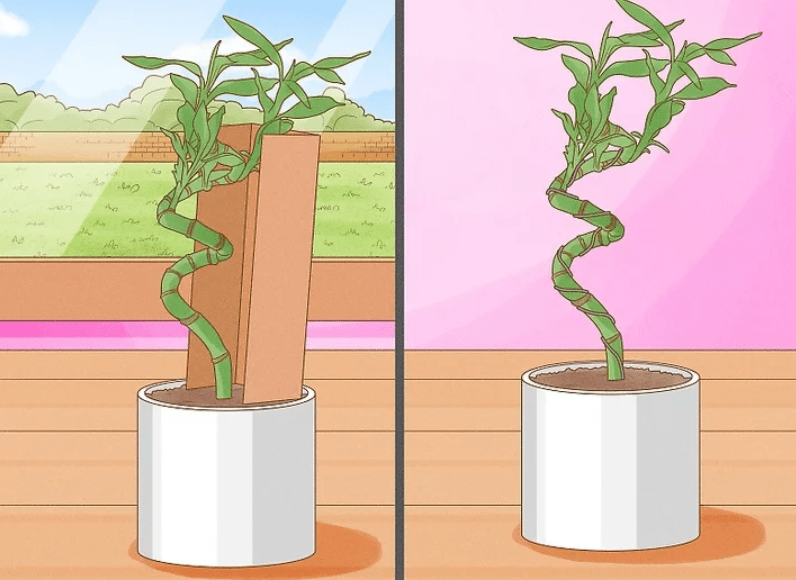
Feeding and Fertilizing
Feeding and Fertilizing are crucial for the health and growth of your bamboo plant. It’s important to keep the soil consistently moist, but not waterlogged. Water your bamboo plant when the top inch of soil feels dry to the touch. Be sure to water the plant thoroughly, allowing excess water to drain away. Using room temperature or tepid water is important, as cold water can shock the plant’s roots.
In addition to regular watering, it’s a good idea to occasionally fertilize your bamboo plant with a balanced, liquid fertilizer to promote healthy growth. Be sure to follow the instructions on the fertilizer packaging for the best results. By providing your indoor bamboo with the right amount of water and nutrients, you can help it to thrive and grow into a beautiful and healthy plant.
Remember that proper feeding and fertilizing are essential for the overall health and well-being of your bamboo plant, so be sure to keep up with these important tasks to ensure its long-term success.
Pruning and Trimming
Are essential for maintaining the health and appearance of your bamboo plant. Regular pruning can help to remove dead or yellowing leaves, promote new growth, and maintain the overall shape of the plant. Use clean, sharp pruning shears to carefully remove any dead or damaged leaves, as well as any shoots or stalks that are growing in unwanted directions. It’s important to prune your bamboo plant regularly to prevent it from becoming overgrown and to encourage healthy, balanced growth. Additionally, trimming any overgrown or unruly branches can help to improve the overall appearance of the plant and prevent it from becoming too crowded. By taking the time to prune and trim your bamboo plant, you can help it to stay healthy and vibrant, while also ensuring that it looks its best. Just be sure to use caution and care when pruning and trimming to avoid damaging the plant. With proper care and attention, your indoor bamboo plant can continue to thrive and bring beauty to your home.
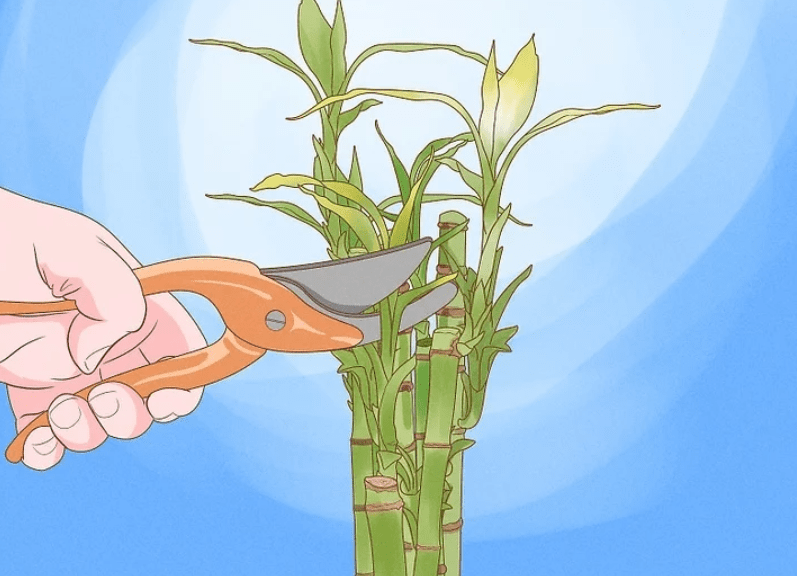
Controlling Pests and Diseases
is essential for maintaining the health and vitality of your plants. One of the best ways to prevent pests and diseases from affecting your plants is to keep them healthy and strong. This can be achieved through regular watering, proper fertilization, and providing the right amount of sunlight. In addition, it’s important to inspect your plants regularly for any signs of pests or diseases, such as yellowing leaves, spots, or unusual growths. If you notice any issues, take action immediately to prevent them from spreading. You can use natural remedies, such as neem oil or insecticidal soap, to control pests, or fungicides to address diseases. It’s also important to remove any affected parts of the plant to prevent the spread of the issue. By staying proactive and vigilant, you can effectively control pests and diseases and help your plants thrive. Remember to always follow the instructions on any pest control or disease treatment products to ensure their safe and effective use. With proper care and attention, you can keep your plants healthy and beautiful for years to come.
Troubleshooting Common Issues
Yellowing Leaves
Yellowing leaves on your plants can be a sign of various issues such as nutrient deficiencies, overwatering, pests, or diseases. It’s important to inspect your plants regularly for any signs of yellowing leaves, spots, or unusual growths. If you notice any issues, take action immediately to prevent them from spreading. You can use natural remedies like neem oil or insecticidal soap to control pests, or fungicides to address diseases. It’s also important to remove any affected parts of the plant to prevent the spread of the issue. By staying proactive and vigilant, you can effectively control pests and diseases and help your plants thrive. Remember to always follow the instructions on any pest control or disease treatment products to ensure their safe and effective use. With proper care and attention, you can keep your plants healthy and beautiful for years to come.
Stunted Growth
Stunted Growth can be a common issue with plants, and there are several factors that can contribute to it. Poor soil quality, lack of sunlight, overwatering, and pests or diseases are all potential causes of stunted growth in plants. One way to address this issue is to regularly inspect your plants for any signs of distress, such as yellowing leaves or unusual growth patterns. By identifying the problem early on, you can take action to address it and prevent it from getting worse. For example, if you notice signs of pests or disease, you can use natural remedies like neem oil or insecticidal soap to control the issue. It’s also important to ensure that your plants are receiving the right amount of sunlight and water, and to address any soil deficiencies if necessary. By staying proactive and addressing any issues as soon as they arise, you can help promote healthy growth in your plants and prevent stunted growth from becoming a larger problem.
Leaf Drop
Can be a natural process for some plants, especially during the changing seasons. However, excessive leaf drop can be a sign of stress or an underlying issue with the plant. Factors such as over or under-watering, poor soil quality, pests, diseases, or environmental changes can contribute to excessive leaf drop. It’s important to identify the cause of the issue and take appropriate action to address it. Regularly inspecting your plants for signs of distress, maintaining proper watering and soil conditions, and addressing any pest or disease issues can help prevent excessive leaf drop. Additionally, providing the right amount of sunlight and humidity for your plants can also help keep their leaves healthy and prevent excessive leaf drop. By understanding the causes of leaf drop and taking proactive measures to care for your plants, you can help them stay healthy and vibrant.
Propagating Indoor Bamboo
Methods of Propagation
There are several methods of propagating indoor bamboo, including division, layering, and planting from cuttings. Division involves separating the rhizomes or roots of the plant to create new plants. Layering involves encouraging a stem to produce roots while still attached to the parent plant, and then cutting and replanting it once the roots have developed. Planting from cuttings involves taking a section of stem with nodes and leaves and planting it in soil to encourage root growth. These methods can help you expand your indoor bamboo collection and promote healthy growth in your plants.
Step-by-Step Propagation Guide
Propagation is the process of creating new plants from existing ones, and it can be a fun and rewarding activity for any plant lover. When it comes to indoor bamboo, there are several methods of propagation that you can try, including division, layering, and planting from cuttings. Division involves separating the rhizomes or roots of the plant to create new plants, while layering encourages a stem to produce roots while still attached to the parent plant, and then cutting and replanting it once the roots have developed. Planting from cuttings involves taking a section of stem with nodes and leaves and planting it in soil to encourage root growth. These methods can help you expand your indoor bamboo collection and promote healthy growth in your plants. Additionally, providing the right amount of sunlight and humidity for your plants can also help keep their leaves healthy and prevent excessive leaf drop. By understanding the causes of leaf drop and taking proactive measures to care for your plants, you can help them stay healthy and vibrant. So, whether you’re a beginner or an experienced gardener, giving propagation a try can be a great way to grow your indoor bamboo collection and enjoy the process of nurturing new plants.
Enhancing Your Indoor Space with Bamboo
Decorative Ideas
When it comes to decorating your indoor space with bamboo, there are several creative ideas you can try. Bamboo can add a natural and calming element to your home decor. You can use bamboo as a room divider to add privacy and a touch of Zen to your space. Another decorative idea is to incorporate bamboo into your lighting fixtures, such as using bamboo pendant lights or floor lamps. You can also bring the outdoors in by adding bamboo plants to your indoor space. They not only add a touch of greenery but also help purify the air. Additionally, you can use bamboo as a material for your furniture or incorporate bamboo accents in your home decor. Embracing the beauty and versatility of bamboo can bring a sense of tranquility and harmony to your indoor space. Whether you prefer a minimalist, modern, or eclectic style, there are many ways to incorporate bamboo into your home decor to create a unique and inviting atmosphere.
Seasonal Care Tips
When it comes to seasonal care tips for your home, there are a few things to keep in mind. During the winter, it’s important to make sure your home is well insulated to keep the cold air out and the warm air in. You can also add cozy touches like throw blankets and rugs to create a warm and inviting space. In the spring, consider bringing in some fresh flowers or plants to add a pop of color and freshness to your home. It’s also a good time to do some deep cleaning and decluttering to refresh your space. During the summer, take advantage of natural light and open windows to create a bright and airy atmosphere. Consider adding some outdoor elements indoors, like seashells or beachy decor, to bring a summer vibe into your space. In the fall, you can add warm and cozy accents like throw pillows and candles to create a comforting and inviting atmosphere. It’s also a good time to bring in some seasonal decor like pumpkins or fall foliage to embrace the changing season. No matter the season, taking care of your home and making small changes to reflect the time of year can help create a comfortable and welcoming environment for you and your family.
In conclusion, growing healthy bamboo indoors requires the right variety of bamboo, proper watering and light conditions, and regular maintenance. By following the tips and tricks provided in this guide, you can ensure that your indoor bamboo thrives and adds a touch of natural beauty to your home. Remember to keep an eye on the health of your bamboo, as any signs of distress or disease should be addressed promptly to keep your plant healthy and vibrant.
Frequently asked questions And Answer
The best type of bamboo to grow indoors is the lucky bamboo, also known as Dracaena sanderiana. It is low-maintenance and can thrive in low light conditions.
Indoor bamboo prefers bright, indirect light. It should be placed near a window where it can receive plenty of natural light, but not direct sunlight.
It’s important to keep the soil of indoor bamboo consistently moist, but not waterlogged. Water your bamboo when the top inch of soil feels dry to the touch.
Yes, you can fertilize indoor bamboo with a balanced, water-soluble fertilizer. Fertilize your bamboo once a month during the growing season (spring and summer).
To prevent your indoor bamboo from becoming leggy, rotate the plant regularly to ensure even growth and trim any yellow or unhealthy leaves.
It is not recommended to grow indoor bamboo in a container without drainage holes, as it can lead to waterlogged soil and root rot. Make sure the container has drainage holes to allow excess water to escape.
Common pests that can affect indoor bamboo include spider mites and mealybugs. Keep an eye out for any signs of infestation and treat the plant with an appropriate insecticide if necessary.
Yes, lucky bamboo can be grown in water instead of soil. Simply place the bamboo in a container filled with water and make sure to change the water every 1-2 weeks to prevent stagnation and algae growth.
